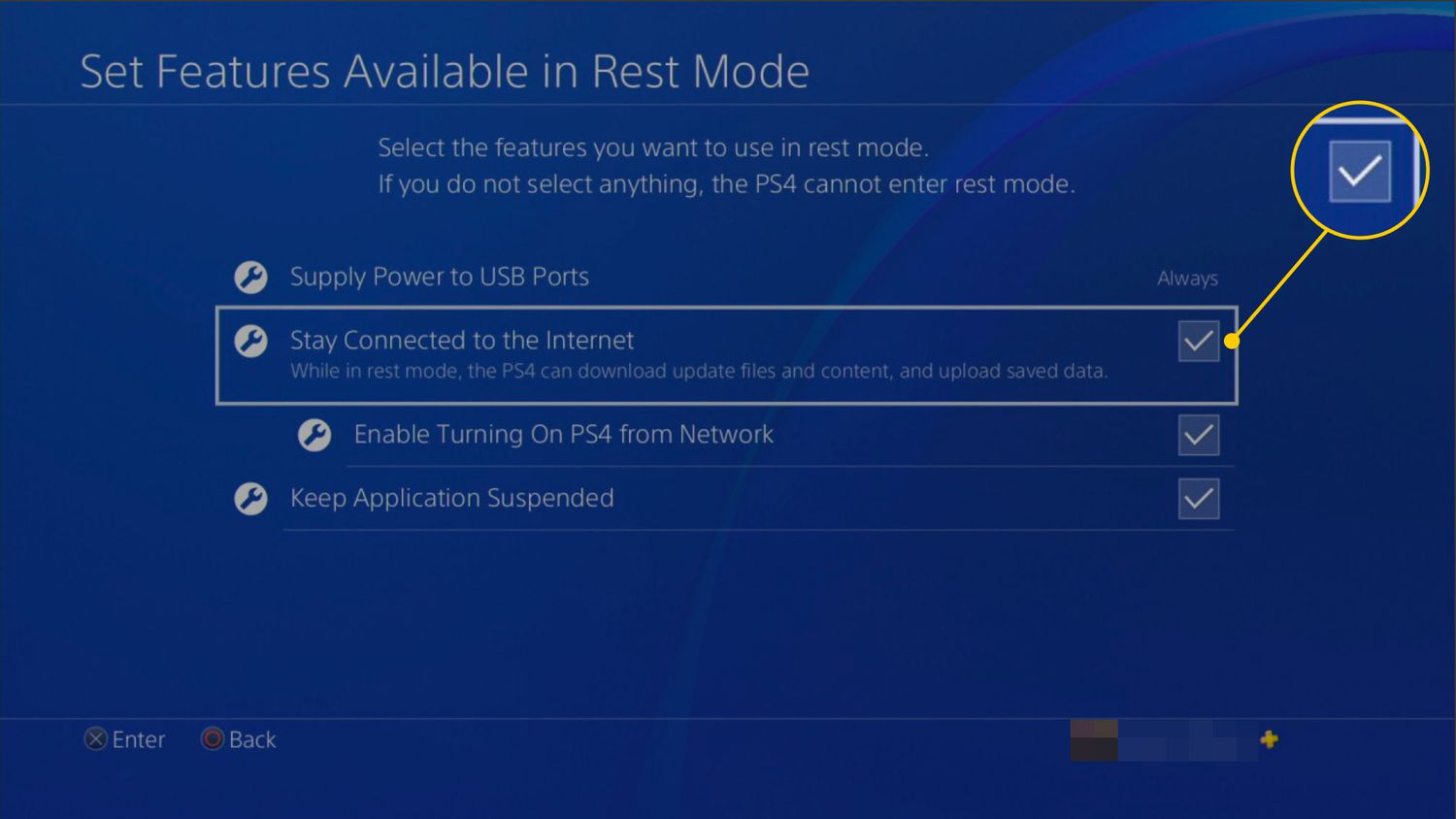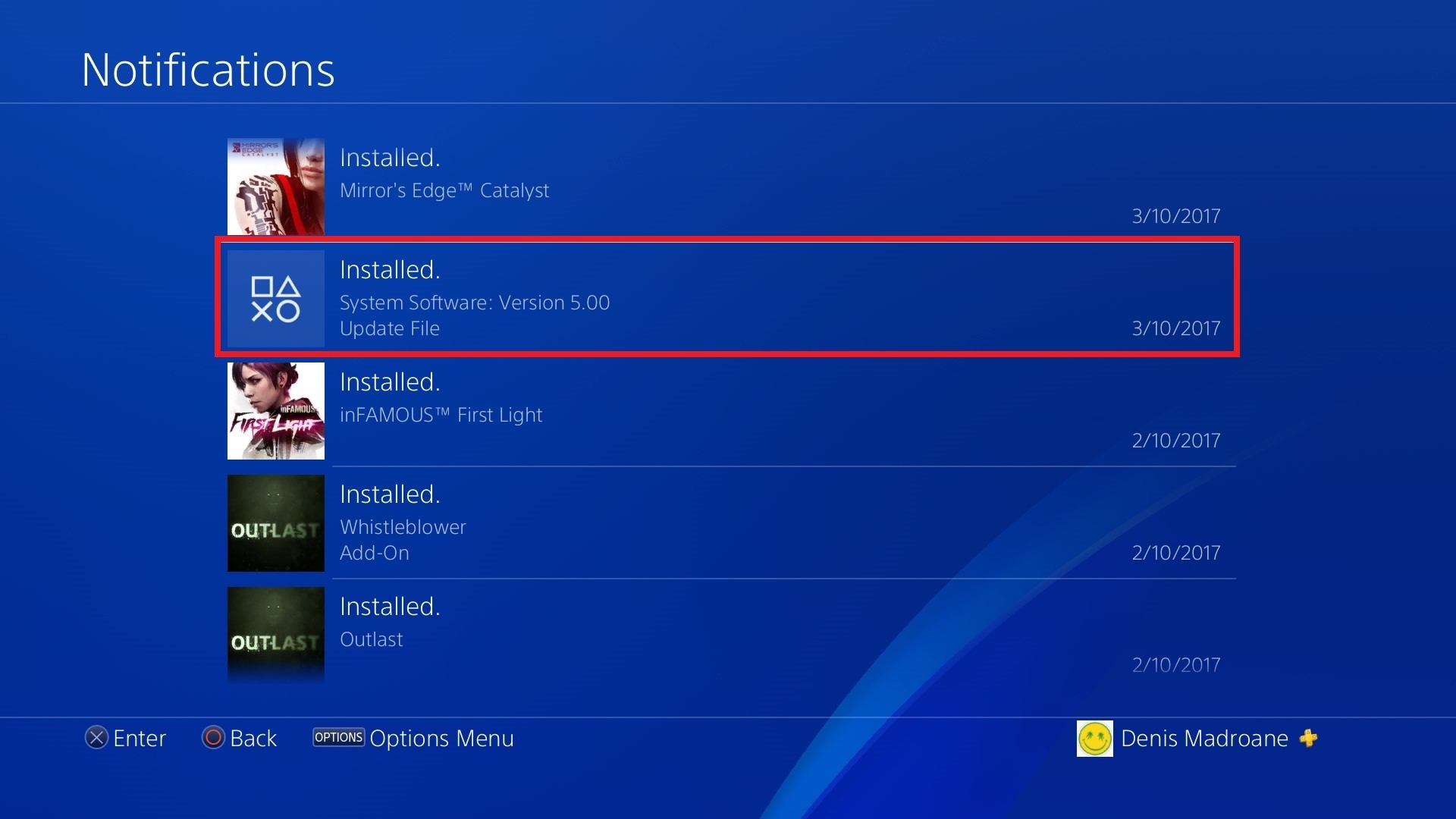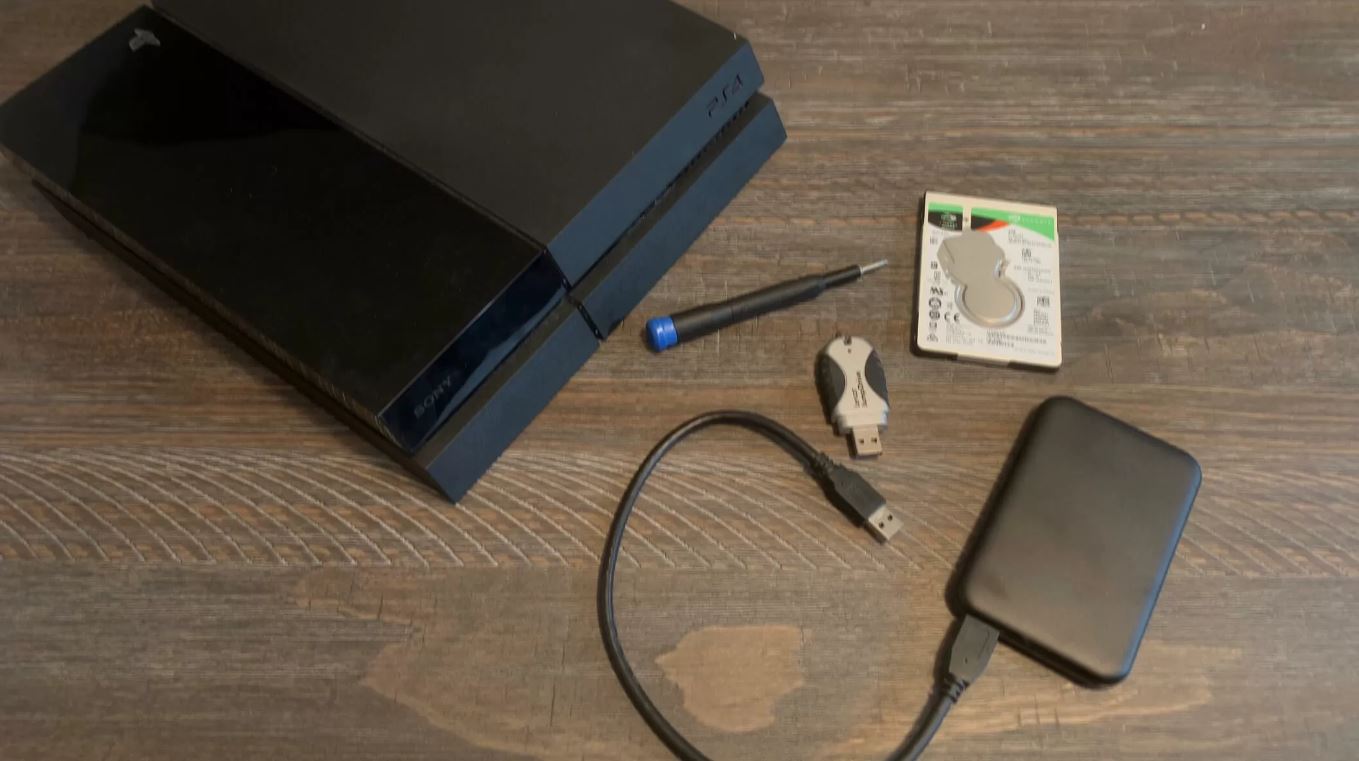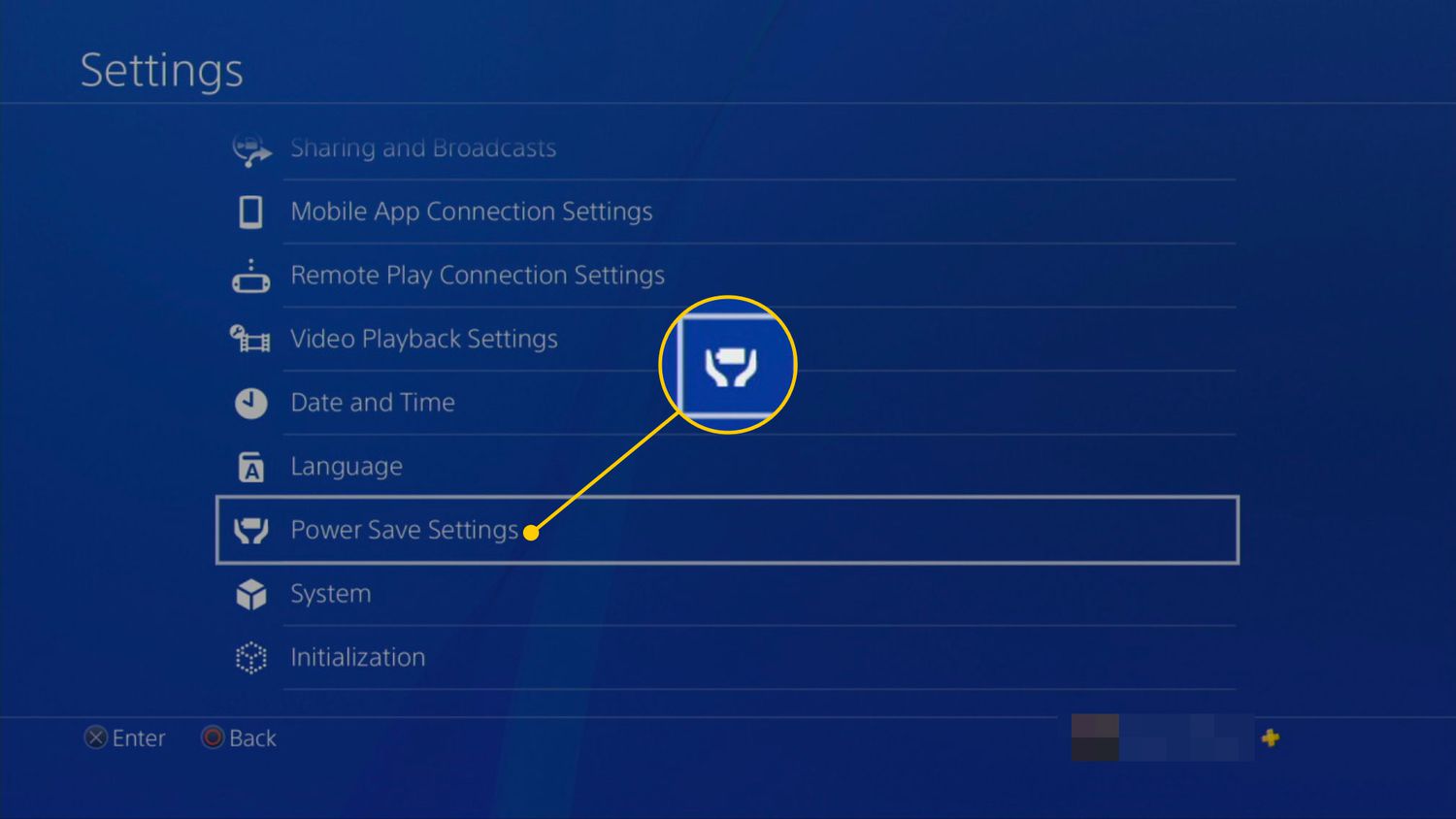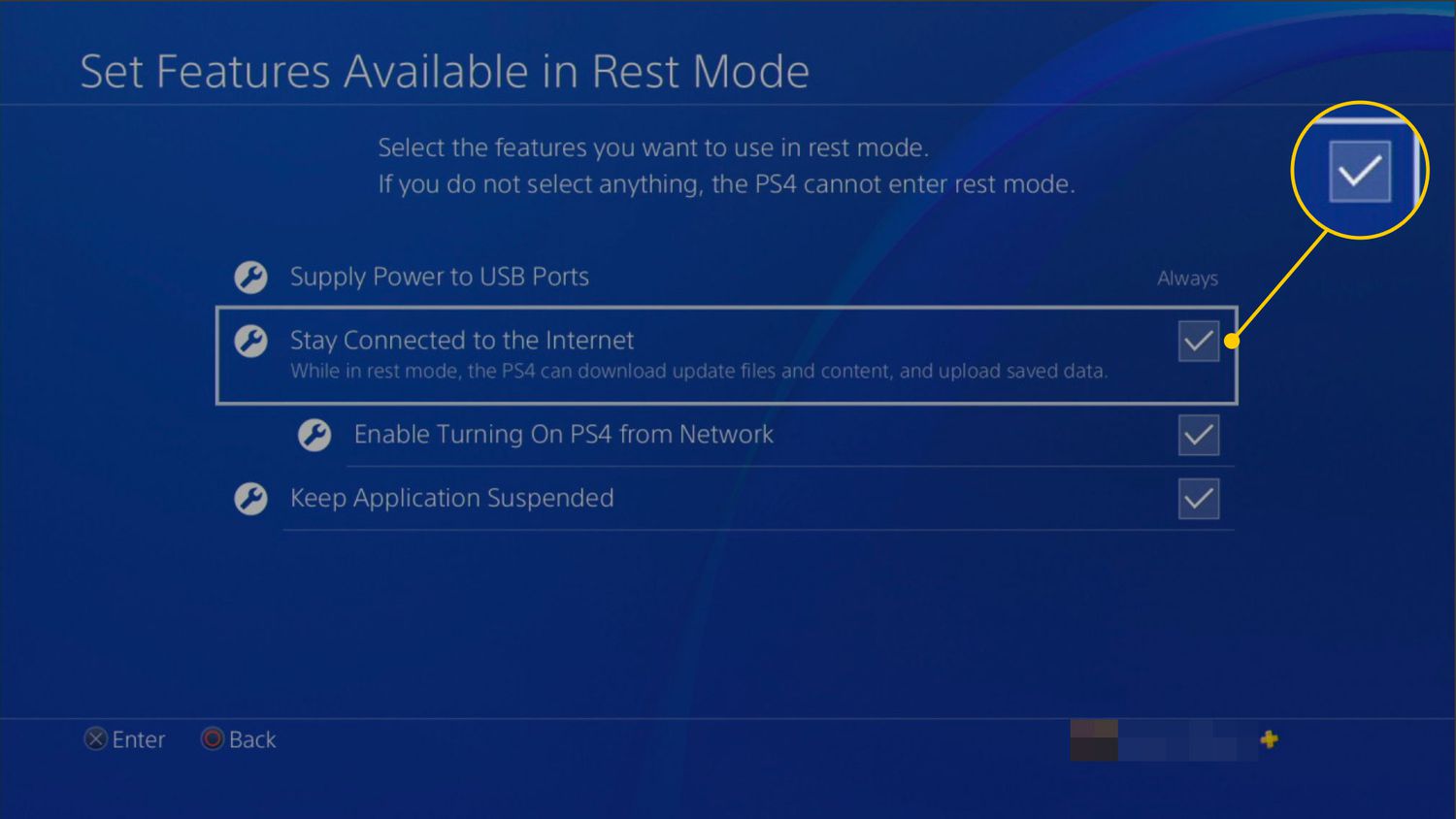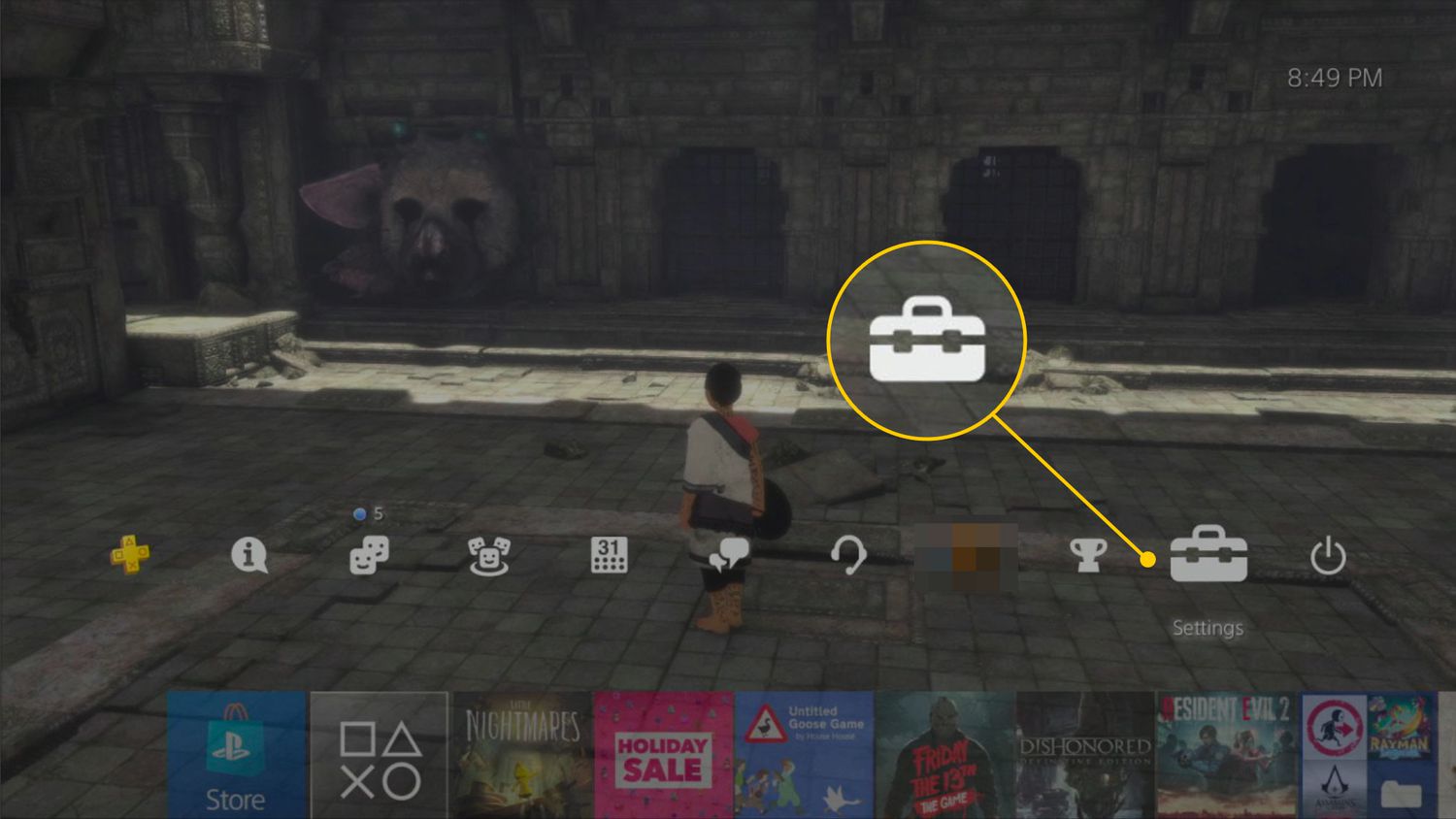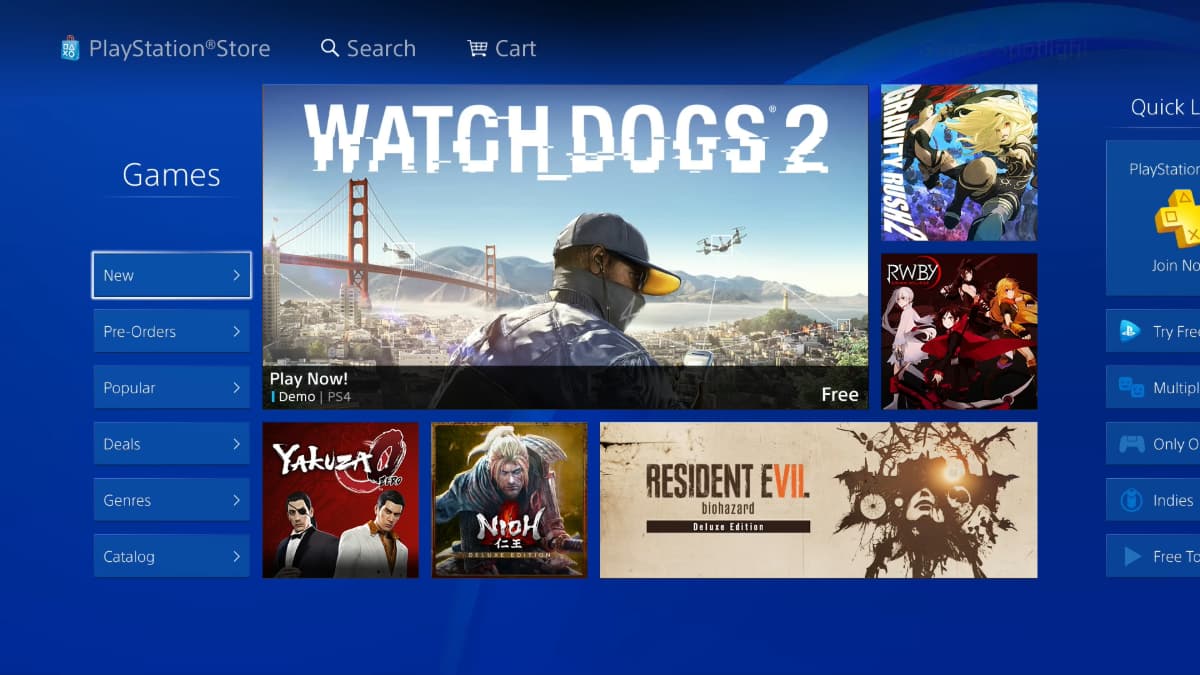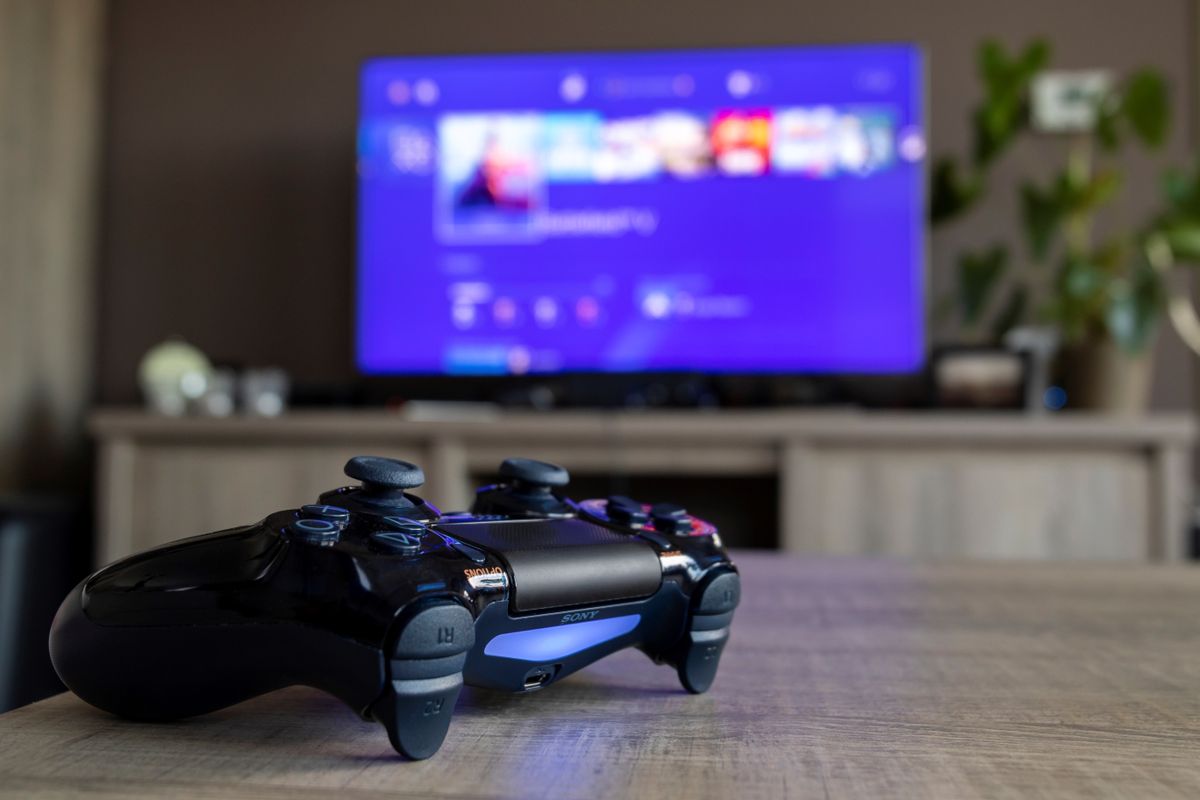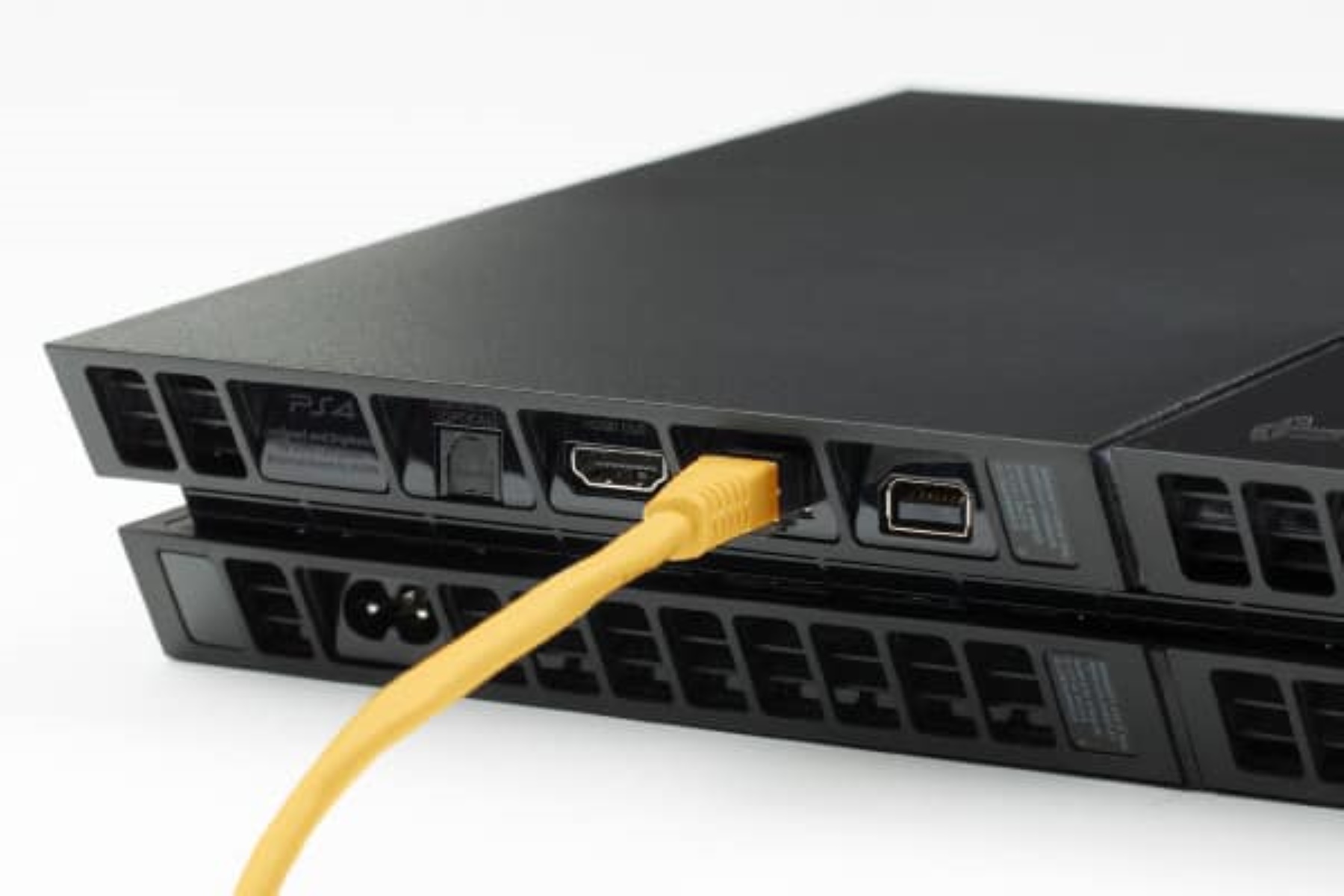Introduction
Are you tired of waiting for hours to download games or updates on your PlayStation 4 (PS4)? Slow download speeds can be frustrating, especially when you’re excited to play your favorite games. But don’t worry, there are several strategies you can use to speed up download times on your PS4. In this article, we will explore these methods and help you optimize your internet connection for faster downloads.
Understanding the factors that affect download speed on the PS4 is crucial. Several factors can contribute to slow downloads, including your internet connection, network setup, and even the PS4 system software. By addressing these factors, you can significantly improve the download speed and get back to gaming in no time.
So, whether you’re experiencing sluggish download speeds or simply want to optimize your PS4’s performance, this guide will provide you with practical steps to speed up your downloads. Let’s dive in and make sure you have a seamless gaming experience on your PS4.
Remember, every user’s situation can vary, and the effectiveness of these methods may differ depending on your internet service provider (ISP) and network conditions. However, it’s worthwhile to try these steps to see if they can help improve download speeds on your PS4.
Understanding the factors affecting download speed on PS4
Before we dive into the solutions for speeding up downloads on your PS4, it’s important to understand the factors that can affect your download speed. By having a clear understanding of these factors, you can better troubleshoot and optimize your internet connection for faster downloads.
1. Internet connection speed: The speed of your internet connection is a crucial factor in determining download speeds on your PS4. If your internet connection has a low bandwidth or is experiencing congestion, it can significantly impact the download speed. Make sure you have a reliable and fast internet connection to enjoy faster downloads on your PS4.
2. Network setup: The way your network is set up can also affect download speeds on your PS4. Factors such as the type of router you use, its location, and the number of devices connected to your network can all impact download performance. Ensure that your router is placed in an optimal location and consider using a wired connection rather than relying on Wi-Fi for a more stable and faster download experience.
3. PS4 system software: The software running on your PS4 can also impact download speeds. Outdated software or errors within the system software can slow down downloads. Keeping your PS4 software up to date is essential for optimal performance and faster downloads.
4. Background downloads or uploads: If there are other downloads or uploads happening in the background on your PS4, it can monopolize your available bandwidth and slow down the download speeds. Make sure to pause or cancel any ongoing downloads or updates to prioritize the download you want to speed up.
5. DNS settings: The DNS (Domain Name System) settings on your PS4 can impact the speed at which it connects to the internet and downloads content. By adjusting your DNS settings, you can potentially improve download speeds on your PS4.
Keep in mind that these factors can interact with each other and collectively affect your download speeds on the PS4. By addressing and optimizing each of these factors, you can significantly improve your download speed for a smoother gaming experience.
Checking your internet connection
When it comes to improving download speeds on your PS4, the first step is to ensure that your internet connection is up to par. Here are some steps to check and optimize your internet connection:
1. Test your internet speed: Use online speed test tools to measure your internet speed. This will give you an idea of the bandwidth you’re currently getting. If the speed test results show a significantly lower speed than what you’re paying for, you may need to contact your internet service provider (ISP) to address the issue.
2. Use a wired connection: Wi-Fi connections can be susceptible to interference and signal strength issues, which can impact download speeds. Consider connecting your PS4 directly to the router using an Ethernet cable. Wired connections generally offer a more stable and faster internet connection, enhancing your download speeds.
3. Check for network congestion: If you share your internet connection with other users or have multiple devices connected to your network, it’s possible that network congestion may be affecting your download speeds. Disconnect any unnecessary devices and prioritize your PS4 for an uninterrupted and faster download experience.
4. Restart your modem and router: Sometimes, a simple reset of your modem and router can resolve temporary connection issues. Turn off both the modem and router, wait for a few minutes, and then turn them back on. This can refresh the connection and potentially improve download speeds on your PS4.
5. Update your router’s firmware: Router firmware updates often include performance improvements and bug fixes. Check the manufacturer’s website or the router settings page to see if there is a firmware update available for your router. Keeping your router firmware up to date can help optimize your internet connection and enhance download speeds.
By performing these steps and ensuring that your internet connection is stable and optimized, you can set the foundation for faster download speeds on your PS4. Continue reading to explore other strategies for speeding up your PS4 downloads.
Port forwarding for a faster download speed
If you’re still experiencing slow download speeds on your PS4, port forwarding can be a helpful technique to optimize your connection. Port forwarding involves opening specific ports on your router to allow direct communication between your PS4 and the game servers, resulting in faster and more stable downloads. Here’s how you can set up port forwarding:
1. Identify the necessary ports: Look for the required ports that need to be forwarded for your PS4. The specific ports can vary depending on the game or application you’re using. Check the game’s documentation or the support page of the game developer to find the recommended ports for that game.
2. Access your router settings: Open your router’s configuration page by entering its IP address in a web browser. The IP address is usually printed on the router itself or mentioned in the user manual. If you’re unsure, you can search online by entering your router model and “configuration page” to find the IP address.
3. Navigate to the port forwarding section: Once you’re in the router’s configuration page, look for the “Port Forwarding” or “Virtual Server” section. The location of this section can vary depending on the router’s manufacturer and firmware version.
4. Add a new port forwarding rule: Within the port forwarding section, you’ll typically find a button or option to add a new rule. Click on it and enter the necessary information, including the protocol (TCP or UDP), the port range, and the IP address of your PS4. Save the changes once you’ve filled in the details.
5. Restart your router: After setting up the port forwarding rule, restart your router to apply the changes. This will ensure that the new configuration is active and ready to optimize your download speeds on the PS4.
By forwarding the necessary ports for your PS4, you’re allowing direct and unrestricted communication, reducing any potential lag or delay in the download process. This can lead to a significant improvement in download speeds, especially when playing online games or downloading large files.
Keep in mind that while port forwarding can be effective, it’s important to follow the specific instructions provided by your router’s manufacturer and prioritize security. Always make sure to update your router’s firmware and enable any necessary security measures to protect your network.
With port forwarding in place, you’re one step closer to a faster download experience on your PS4. Let’s explore other strategies to further optimize your download speeds.
Using a wired connection instead of Wi-Fi
When it comes to optimizing download speeds on your PS4, using a wired connection can often provide a more stable and faster internet connection compared to relying on Wi-Fi. While Wi-Fi is convenient, it can be prone to interference and signal strength issues that can affect download performance. Here’s how you can switch to a wired connection:
1. Connect an Ethernet cable: Locate the Ethernet port on the back of your PS4 and connect one end of the Ethernet cable to it. Connect the other end of the cable to an available Ethernet port on your router or modem.
2. Disable Wi-Fi on your PS4: To ensure that your PS4 is using the wired connection, go to the “Settings” menu on your PS4, select “Network,” and then choose “Set Up Internet Connection.” Follow the prompts to disable the Wi-Fi connection.
3. Adjust network settings: After disabling the Wi-Fi, you may need to adjust the network settings on your PS4 to ensure a smooth wired connection. Select “Custom” when prompted for network settings and choose “Wired” as the connection type. Follow the instructions to complete the setup.
4. Test your connection: Once you’ve switched to a wired connection, run a network connection test on your PS4 to ensure that everything is functioning correctly. Go to the “Settings” menu, select “Network,” and then choose “Test Internet Connection.” This test will verify that your PS4 is connected to the internet through the wired connection.
By utilizing a wired connection, you can minimize the impact of signal interference and fluctuations, resulting in a more stable and reliable internet connection. This stability can lead to faster download speeds on your PS4, allowing you to start gaming sooner.
If you cannot connect your PS4 directly to the router or modem due to distance limitations, consider using Powerline adapters. These adapters use your home’s electrical wiring to transmit the internet signal, effectively extending your wired connection to any room in your house.
Keep in mind that while a wired connection is generally more reliable, it may not always be practical in every situation. If a wired connection is not feasible, make sure that your PS4 is located as close to the Wi-Fi router as possible to improve signal strength and reduce interference.
Switching to a wired connection can significantly enhance your download speeds on the PS4. However, it’s worth noting that other factors, such as your internet speed and network setup, can still impact overall performance. Therefore, it’s essential to consider other strategies to further optimize your download experience.
Pausing or cancelling other downloads or updates
If you’re experiencing slow download speeds on your PS4, one common culprit could be other downloads or updates happening simultaneously. Pausing or cancelling these downloads can help allocate more bandwidth and resources for the download you want to prioritize. Here’s how you can manage other downloads or updates on your PS4:
1. Access the download queue: On your PS4, go to the home screen and navigate to the “Notifications” icon located at the top of the screen. From there, select the “Downloads” option to open the download queue.
2. Pause or cancel downloads: In the download queue, you’ll see a list of all ongoing downloads and updates. Highlight the download that you want to pause or cancel and press the options button on your controller. From the menu that appears, select “Pause” or “Cancel” to make the desired changes.
3. Prioritize the download: To ensure that your intended download is prioritized, select it from the queue and move it to the top of the list. This will give it the highest priority in terms of bandwidth allocation.
4. Check for automatic updates: Automatic updates can run in the background and consume bandwidth on your PS4. To manage these updates, go to the “Settings” menu, select “System,” then choose “Automatic Downloads.” From there, you can disable automatic downloads or set specific times for them to occur.
By pausing or cancelling other downloads and updates, you can eliminate potential competition for bandwidth and resources, allowing your desired download to proceed at a faster speed. This strategy is particularly useful when you’re downloading a large game or update that requires a considerable amount of network resources.
However, it’s important to remember to resume or re-enable any paused or cancelled downloads or updates once your priority download has finished. This will ensure that you don’t miss out on important system updates or patches.
In addition to managing other downloads and updates on your PS4, it’s also a good idea to set your PS4 to rest mode during downloads. This way, the PS4 can continue downloading in the background, even when it’s not actively in use. Rest mode optimizes download speeds and reduces the likelihood of interruptions or slowdowns.
By pausing or cancelling other downloads or updates on your PS4, you’ll be able to allocate more resources to the specific download you want to prioritize, resulting in faster download speeds and a smoother gaming experience.
Updating your PS4 software
Keeping your PS4 software up to date is crucial for optimal performance and faster download speeds. System software updates often include bug fixes, performance improvements, and new features that can enhance the overall functionality of your PS4. Here’s how you can update your PS4 software:
1. Automatic updates: By default, your PS4 is set to automatically download and install system software updates. However, if you’ve disabled automatic updates or want to manually check for updates, you can do so by navigating to the “Settings” menu on your PS4’s home screen.
2. System software update: In the “Settings” menu, scroll down and select “System Software Update.” If an update is available, the PS4 will begin the download and installation process. Make sure your PS4 is connected to the internet and has enough free storage space for the update.
3. Rest mode update: You can also set your PS4 to automatically download and install updates while in rest mode. To enable this feature, go to “Settings,” select “Power Saving Settings,” and then choose “Set Features Available in Rest Mode.” Tick the box for “Stay Connected to the Internet” and “Enable Turning on PS4 from Network.” This ensures that your PS4 can download and install updates even when it’s not in use.
4. Manual update: If you prefer to manually update your PS4 software, you can visit the official PlayStation website on your computer or mobile device. Download the latest system software update file from the website and save it to a USB drive. Connect the USB drive to your PS4 and follow the on-screen instructions to perform a manual update.
Regularly updating your PS4 software not only improves performance but also ensures that you have access to the latest features and security enhancements. By staying current with system updates, you can optimize your PS4’s performance, including download speeds.
It’s worth noting that major system updates may take more time to download and install compared to smaller updates. During the update process, it’s important to avoid turning off or unplugging your PS4 to prevent any potential issues or data corruption.
Updating your PS4 software is a simple yet effective way to enhance download speeds and overall system performance. By staying up to date with the latest updates from Sony, you can enjoy a smoother gaming experience and faster downloads on your PS4.
Checking for background downloads or uploads
If you’re experiencing slow download speeds on your PS4, it’s essential to check for any background downloads or uploads that could be using up your internet bandwidth. Here’s how you can identify and manage background activities on your PS4:
1. Access the download queue: On your PS4’s home screen, go to the “Notifications” icon located at the top of the screen. From there, select the “Downloads” option to view the download queue.
2. Pause or cancel background activities: In the download queue, you’ll find a list of ongoing downloads and updates. Identify any background activities that are using up bandwidth and interrupting your desired download. Highlight those activities and press the options button on your controller to access the menu. Choose “Pause” or “Cancel” to stop those downloads or updates temporarily.
3. Upload management: In addition to downloads, it’s also important to manage any ongoing uploads, such as cloud save backups or gameplay recordings. Go to the “Capture Gallery” or “Uploads” section on your PS4’s home screen and check if any uploads are in progress. Pausing or cancelling these uploads can free up bandwidth for downloads.
4. Monitor background processes: Some games or applications may initiate background processes, such as syncing data or performing updates. Access the game or application’s settings and check if there are any background activities occurring. Pause or cancel them if necessary to prioritize your desired download.
Identifying and managing background downloads or uploads can help maximize your available bandwidth for the download you want to prioritize. By pausing or cancelling unnecessary activities, you can significantly improve download speeds on your PS4.
It’s important to note that once you’ve completed the priority download, make sure to resume or re-enable any paused or cancelled activities to avoid missing out on important updates or backups. Regularly checking for background activities can help optimize your PS4’s download performance and ensure a smoother gaming experience.
In addition to monitoring background activities on your PS4, it’s also crucial to check for system updates, as they can improve overall performance and download speeds. Following the previous section on updating your PS4 software will help keep your system up to date and further optimize your downloads.
Clearing cache on your PS4
If you notice sluggish download speeds on your PS4, a buildup of temporary data, known as cache, could be the culprit. Clearing the cache on your PS4 can help improve performance and potentially boost download speeds. Follow these steps to clear the cache:
1. Turn off your PS4: Press and hold the power button on your PS4 until the system fully shuts down. Make sure it’s completely powered off before proceeding to the next step.
2. Disconnect the power cable: Remove the power cable from the back of your PS4 console. This step is essential to ensure a complete power cycle of the system.
3. Wait for a few minutes: Leave your PS4 unplugged for about 5 minutes. This allows enough time for the system to discharge any remaining power and clears the cache.
4. Reconnect and power on your PS4: Plug the power cable back into your PS4 console and power it on. This will initiate a fresh start, and the cache files will be cleared.
Clearing the cache can help remove any temporary data that may be hindering the performance of your PS4, including download speeds. It essentially allows the system to start with a clean slate, potentially resulting in improved performance and faster downloads.
In addition to clearing cache, it’s also beneficial to regularly clean the dust from your PS4 console and ensure proper ventilation. Overheating can lead to performance issues and slower download speeds. Keep the console in a well-ventilated area and consider using a compressed air canister to blow out any dust from the vents.
By periodically clearing the cache and maintaining a clean console, you can optimize the performance of your PS4 and enjoy faster download speeds. Keep in mind that clearing the cache is a safe and routine process, and it won’t delete any of your saved data or game progress.
If you’re still experiencing slow download speeds after clearing the cache, you may need to explore other solutions such as optimizing your internet connection, adjusting your DNS settings, or forwarding ports. These additional steps can further enhance your download speeds on the PS4, providing you with a smoother and more enjoyable gaming experience.
Adjusting DNS settings for faster downloads
Another effective method for improving download speeds on your PS4 is by adjusting the Domain Name System (DNS) settings. DNS translates the domain names you enter into your web browser into the corresponding IP addresses. By using a faster and more reliable DNS server, you can potentially reduce latency and achieve faster download speeds. Here’s how you can adjust your DNS settings on the PS4:
1. Go to the Settings menu: From your PS4’s home screen, navigate to the “Settings” menu.
2. Select Network: Within the Settings menu, choose “Network” to access network-related options.
3. Set up your internet connection: Select “Set Up Internet Connection” to configure the settings for your network connection.
4. Choose your connection type: Depending on your network setup, you’ll need to select either “Use Wi-Fi” or “Use a LAN Cable” (if you’re using a wired connection).
5. Select Custom: On the next screen, choose the “Custom” option to manually set up your network connection.
6. Enter DNS information: When prompted to enter the DNS settings, choose “Manual” instead of “Automatic.” Then, input the preferred and alternative DNS server addresses. You can use public DNS servers like Google DNS (8.8.8.8 and 8.8.4.4) or OpenDNS (208.67.222.222 and 208.67.220.220).
7. Complete the setup: Follow the on-screen instructions to complete the network setup process. Test your internet connection afterward to confirm if the DNS changes have improved download speeds on your PS4.
By changing the DNS settings on your PS4 to a faster and more reliable DNS server, you can potentially reduce any delays or slowdowns in connecting to game servers or downloading content. Keep in mind that the effectiveness of DNS adjustments can vary depending on your geographical location and internet service provider.
It’s important to note that if you experience any issues or changes in network connectivity after adjusting the DNS settings, you can always revert to the previous settings or switch back to automatic DNS configuration.
Adjusting DNS settings is just one of the many steps you can take to optimize download speeds on your PS4. Consider combining this method with other strategies, such as using a wired connection, clearing the cache, or managing background activities, for the best results.
With the right configuration and setup, you can significantly enhance download speeds on your PS4, allowing you to spend more time gaming and less time waiting for downloads to complete.
Conclusion
Improving download speeds on your PS4 is essential for a seamless and enjoyable gaming experience. By following the strategies outlined in this article, you can optimize your internet connection and enhance the download performance of your PS4.
We started by understanding the factors that affect download speed on the PS4. Factors such as internet connection speed, network setup, PS4 system software, background downloads or uploads, and DNS settings can all impact download performance.
We then explored various methods to speed up download times on the PS4. These methods included checking and optimizing your internet connection, using a wired connection instead of Wi-Fi, pausing or canceling other downloads or updates, updating your PS4 software, checking for background downloads or uploads, clearing the cache, and adjusting DNS settings.
While each method may vary in effectiveness depending on your individual circumstances, combining multiple strategies can help maximize download speeds and ensure a smoother gaming experience.
Remember to regularly check for system updates, manage background activities, and maintain a clean console to further optimize the performance of your PS4.
By taking these steps, you’ll be able to overcome slow download speeds and enjoy fast and efficient downloads, allowing you to spend more time playing and less time waiting.
Happy gaming!







